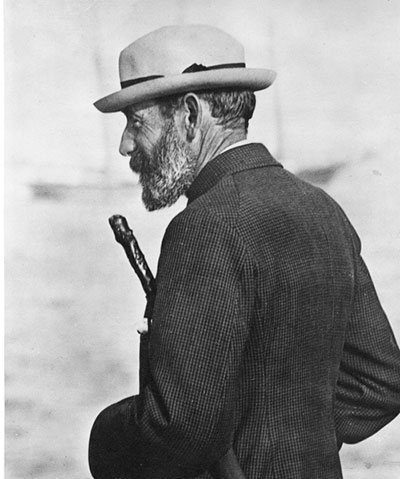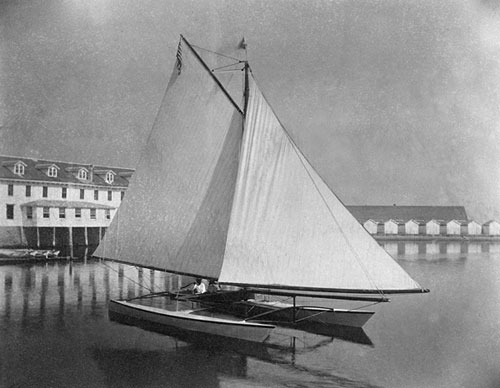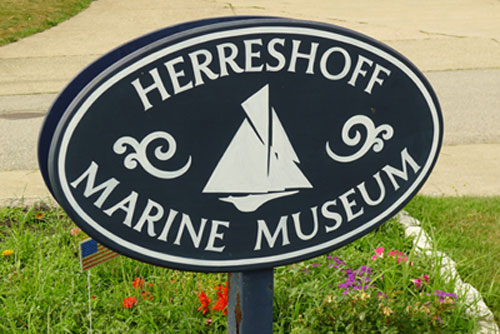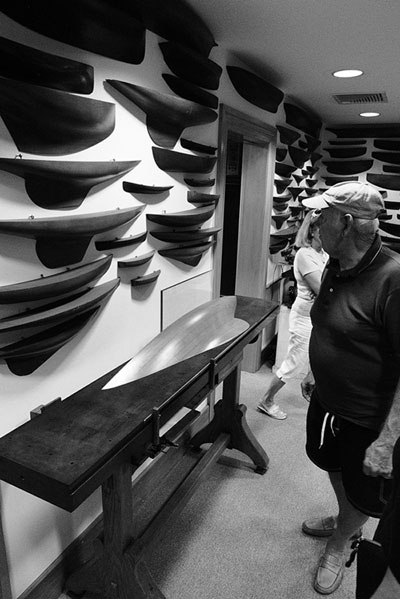Searchable Database Sure to Please Lovers of Nautical Engineering and Casual Sailors

A five-year program to digitize more than 25,000 Herreshoff documents culminates in an easy-to-use, searchable database that is sure to excite lovers of nautical engineering and casual sailors alike.
It’s only fitting that the newest repository of the evidence of the genius of Captain Nat Herreshoff’s nautical designs is at the very institution where Captain Nat got his start: in the hallowed halls of MIT, the institution where the young Herreshoff studied engineering as a member of the class of 1870.
Kurt Hasselbalch, director of MIT’s Hart Nautical Collection, tells SpinSheet the cataloguing of important nautical documents has been going on for a couple of decades, “but we only got into high gear recently with the development of a sophisticated digital library that includes over 25,000 object records, including 17,000 plans from the Herreshoff collection. We hope to double that amount of data available to serious researchers by the middle of the summer. There is a lot here that would be of interest to Chesapeake Bay sailors.”
Assembling and cataloguing the materials has not been without its travails. “We just completed shooting and ‘stitching together’ a set of plans that measured 80 inches in length. We’ve spent thousands of hours on the project and will be continually updating and adding as we go forward. We’ll never get it all…but it is a worthy goal,” says Hasselbalch.
Searching the database takes a little effort, but once you get the hang of it, the rewards justify the time spent. It helps to know what you are looking for, i.e. searching by vessel name returns a plethora of material.

Dubbed the Wizard of Bristol
Dubbed the Wizard of Bristol, Captain Nat is widely recognized as the most important nautical designer of the past two centuries. His most legendary accomplishment was the construction of eight consecutive successful defenders of the America's Cup from 1893 to 1934.Captain Nat himself was at the helm of the successful defender Vigilant in 1893.
In total Captain Nat and his blind boat-building older brother John Brown (“JB”) turned out plans for more than 2500 different kinds of boats: everything ranging from steam powered torpedo boats to the 144-foot America's Cup Reliance, with a sail area of 16,000 square feet.

In 1876, Captain Nat received a U.S. patent for a sailing catamaran, the Amaryllis with a design so revolutionary that the outspoken nautical reporter and Sandbagger sailor Captain Coffin, wrote, “Amaryllis could justly claim to be the fastest thing of her inches under canvas that floats, and it is doubtful if there are any steamers of her size that could out-speed her in a straight reach with the wind abeam.”

Touring the Herreshoff Museum
Touring the Herreshoff Museum located in Bristol, RI, is a mystical experience. Your reporter had the opportunity to do so several years ago with a very distinguished tour guide: Captain Nat’s grandson Halsey Herreshoff. As we walked from room to room, you could almost feel the steady hand of Captain Nat at the helm of the various craft displayed below a wooden walkway.
Halsey took particular pride in showing me the model room where over 500 half-hull models of Herreshoff boats were on display. “Go ahead and run your hands over this hull,” Halsey told me. “Can you imagine Captain Nat carving this model and then measuring it to create the offsets that could be scaled up and subsequently used to produce the molds around which the hulls were built?”
Often, Captain Nat would carve a hull in the morning and deliver a set of plans to the engineers in the loft by the end of the day.

It was this method of designing via half hull models along with building all but the largest boats upside down with a mold for each frame that was the key differentiating factor in the construction of Herreshoff boats. When the business was in its heyday, the average yacht in the Herreshoff yard was built in a little less than four months.
Now, all that painstaking detail of the yachts themselves and the half hulls that bred them can be explored at your leisure courtesy of Hasselbalch and his cohorts. Visitors to the digital portal will be able to see plans, lithographs, and engravings at a resolution that will be enhanced from the original.
“We have generated up to three gigabyte files for some of the big 80-inch plans for the America’s Cup boats,” says Hasselbalch. “The source files are so big they are almost forensic.”
Hasselbalch goes on to say that until this time, there hasn’t been a method to access the collection electronically, “and working with the materials by hand runs the risk of damaging the originals.”
Evelyn Ansel, the project archivist and digitization specialist at the Herreshoff Marine Museum, says the range of materials covered is immense.
“Captain Nat was ‘way off the deep end’ in a lot of things. He designed dog carts, duck hunting boats, electric launches, and the first steam powered fishing vessels. To say his mind was fertile is an understatement,” she says.
“It was a once-in-a-lifetime experience to handle and digitize these records,” Ansel says.
Halsey Herreshoff agrees. “To be able to bring these materials to life in a new format is exciting. Captain Nat would be pleased.”
Lighter, Stronger, Faster: The Herreshoff Legacy
The Hart Museum at MIT has also mounted an exhibit called: “Lighter, Stronger, Faster: The Herreshoff Legacy,” celebrating the spirit of innovation of Captain Nat brought to life with objects from the museum’s collection as well as materials from the Mystic Seaport Museum, the Rhode Island Historical Society, the Naval War College, and the Museum of Science and Industry.
The exhibition runs through May 1, 2021. Find information on the Herreshoff exhibit here.
By Craig Ligibel




